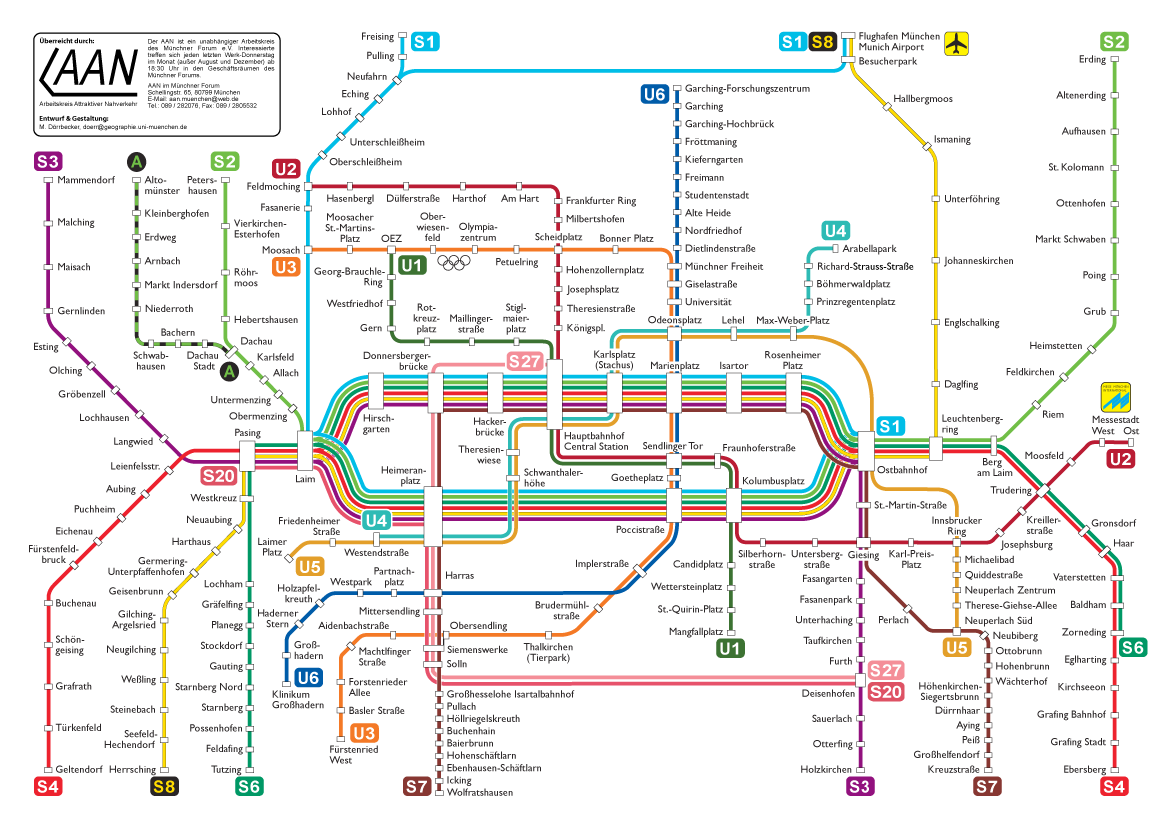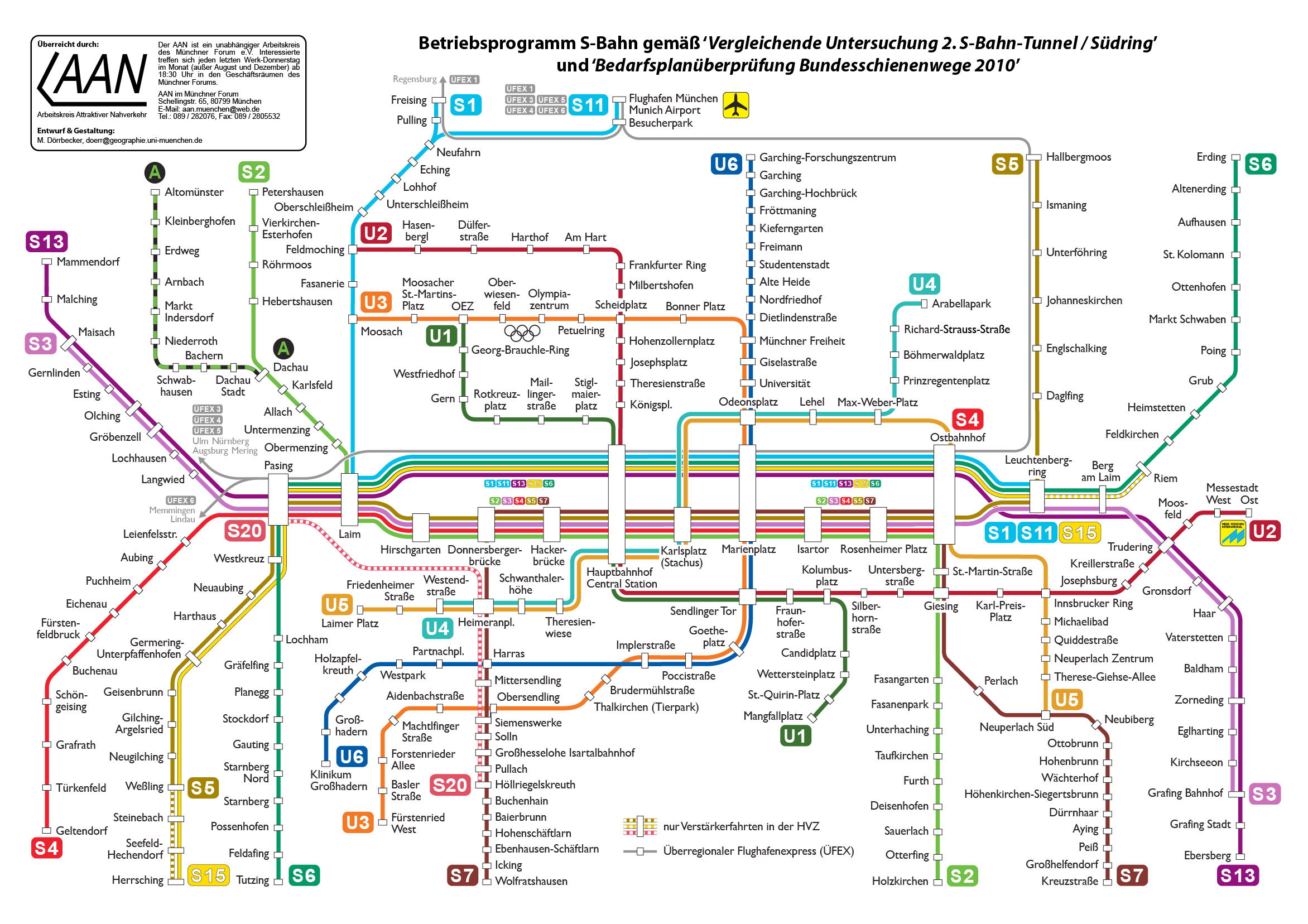|
München Süd Station
München Süd (Munich South station) is a disused railway station and a railway goods station in the Munich borough of Ludwigsvorstadt-Isarvorstadt. The train services were withdrawn on 1 July 1985. In 2005, the last buildings were demolished to make room for office buildings. The station is located on the South Ring (Südring), connecting Munich Central Station with Munich East. The public transport is now handled by Poccistraße Munich U-Bahn station, located to the west of the old railway station. The Isar Valley Railway used to start at the ''Südbahnhof'', going via München Isartalbahnhof (Munich Isar Valley station) and Großhesselohe Isartalbahnhof railway station towards Wolfratshausen and Bichl. During the planning studies for the second Munich S-Bahn ''Stammstrecke'' route, one of the several routes considered was the South Ring. However, the South Ring concept was abandoned as it was deemed to be "inefficient" in terms of travel time between Munich Hauptbahnhof a ... [...More Info...] [...Related Items...] OR: [Wikipedia] [Google] [Baidu] |
Munich
Munich is the capital and most populous city of Bavaria, Germany. As of 30 November 2024, its population was 1,604,384, making it the third-largest city in Germany after Berlin and Hamburg. Munich is the largest city in Germany that is not a state of its own. It ranks as the 11th-largest city in the European Union. The metropolitan area has around 3 million inhabitants, and the broader Munich Metropolitan Region is home to about 6.2 million people. It is the List of EU metropolitan regions by GDP#2021 ranking of top four German metropolitan regions, third largest metropolitan region by GDP in the European Union. Munich is located on the river Isar north of the Alps. It is the seat of the Upper Bavaria, Upper Bavarian administrative region. With 4,500 people per km2, Munich is Germany's most densely populated municipality. It is also the second-largest city in the Bavarian language, Bavarian dialect area after Vienna. The first record of Munich dates to 1158. The city ha ... [...More Info...] [...Related Items...] OR: [Wikipedia] [Google] [Baidu] |
Wolfratshausen Railway Station
Wolfratshausen station is a station of the Munich S-Bahn. It is located in the Upper Bavarian town of Wolfratshausen in Germany. It is classified by Deutsche Bahn as a German railway station categories, category 6 station. It has two platform tracks next to a central platform. The station is located in the network area of the Münchner Verkehrs- und Tarifverbund (Munich Transport and Tariff Association, MVV) and is served by S7 (Munich), line 7 of the S-Bahn, which is operated by Deutsche Bahn. The station was established on 27 July 1891 as a terminus when the Isar Valley Railway from Munich was put into operation. The line was built and operated by Lokalbahn AG (LAG). The station became a through station on 1 June 1897 when the Isar Valley Railway was extended to Eurasburg. In 1898, the line was extended from Eurasburg to Bichl. Until the nationalisation of the LAG in 1938 the Wolfratshausen station included a locomotive depot. From 1957 to 27 May 1972 Deutsche Bundesbahn closed ... [...More Info...] [...Related Items...] OR: [Wikipedia] [Google] [Baidu] |
Railway Stations In Munich
Rail transport (also known as train transport) is a means of transport using wheeled vehicles running in tracks, which usually consist of two parallel steel rails. Rail transport is one of the two primary means of land transport, next to road transport. It is used for about 8% of passenger and freight transport globally, thanks to its energy efficiency and potentially high speed.Rolling stock on rails generally encounters lower frictional resistance than rubber-tyred road vehicles, allowing rail cars to be coupled into longer trains. Power is usually provided by diesel or electric locomotives. While railway transport is capital-intensive and less flexible than road transport, it can carry heavy loads of passengers and cargo with greater energy efficiency and safety. Precursors of railways driven by human or animal power have existed since antiquity, but modern rail transport began with the invention of the steam locomotive in the United Kingdom at the beginning of the 19th ... [...More Info...] [...Related Items...] OR: [Wikipedia] [Google] [Baidu] |
Münchner Südring
Munich South Ring () is the common name for a railway line running near the centre and through the southern districts of the Bavarian state capital of Munich. It connects Munich East station to the Munich Central Station (''Hauptbahnhof'') and Laim marshalling yard. Operationally it is mostly included in the Munich–Rosenheim railway (line 5510). The South Ring is used by freight traffic as a direct connection between Laim and Munich East, bypassing the Hauptbahnhof. It is used by virtually all passenger trains between the central station and Rosenheim station, Rosenheim or Mühldorf (Oberbayern) station, Mühldorf. Only the Munich S-Bahn services run between the central station and Munich East on a separate line, the Trunk line (Munich S-Bahn), S-Bahn trunk line, cutting through the city centre in a tunnel. Since the S-Bahn line is congested, it has long been debated whether to build another central tunnel as a second trunk line or to upgrade the South Ring for S-Bahn operation ... [...More Info...] [...Related Items...] OR: [Wikipedia] [Google] [Baidu] |
Munich Ostbahnhof
Munich East station (, also called ''München Ostbahnhof'' in regional services) is a major railway station in Munich, the capital of Bavaria, Germany. The station opened in 1871 as Haidhausen station on the Munich–Mühldorf and Munich–Rosenheim railway lines. DB Station&Service, a subsidiary of Deutsche Bahn AG, operates the station. It is classified as a Category 1 station, one of 21 in Germany and one of two in Munich (the other is München Hauptbahnhof). Munich East is the city's third interregional station, along with München Hauptbahnhof in the city centre and München-Pasing in the west. History The first station, built according to plans designed by Friedrich Bürklein, was inaugurated on 1 May 1871 as part of the newly built railway line to Neuötting via Mühldorf am Inn. The line to Rosenheim opened on 15 October 1871. It was initially named ''Haidhausen'' after the eponymous quarter, but it received its present name ''München Ost'' on 15 October 1876. Th ... [...More Info...] [...Related Items...] OR: [Wikipedia] [Google] [Baidu] |
Munich Hauptbahnhof
Munich is the capital and most populous city of Bavaria, Germany. As of 30 November 2024, its population was 1,604,384, making it the third-largest city in Germany after Berlin and Hamburg. Munich is the largest city in Germany that is not a state of its own. It ranks as the 11th-largest city in the European Union. The metropolitan area has around 3 million inhabitants, and the broader Munich Metropolitan Region is home to about 6.2 million people. It is the List of EU metropolitan regions by GDP#2021 ranking of top four German metropolitan regions, third largest metropolitan region by GDP in the European Union. Munich is located on the river Isar north of the Alps. It is the seat of the Upper Bavaria, Upper Bavarian administrative region. With 4,500 people per km2, Munich is Germany's most densely populated municipality. It is also the second-largest city in the Bavarian language, Bavarian dialect area after Vienna. The first record of Munich dates to 1158. The city ha ... [...More Info...] [...Related Items...] OR: [Wikipedia] [Google] [Baidu] |
Munich S-Bahn
The Munich S-Bahn () is an Railway electrification system, electric rail transit system in Munich, Germany. "S-Bahn" is the German abbreviation for ''Stadtschnellbahn'' (literally, "urban rapid rail"), and the Munich S-Bahn exhibits characteristics of both rapid transit and commuter rail systems. The Munich S-Bahn network is operated by S-Bahn München, a subsidiary of DB Regio Bayern, which is itself a subsidiary of the German national railway company, Deutsche Bahn. It is integrated into the Munich Transport and Tariff Association (''Münchner Verkehrs- und Tarifverbund'', MVV) and interconnected throughout the city with the locally owned Munich U-Bahn. Today, the S-Bahn covers most of the populated area of the Munich metropolitan area of about 3 million inhabitants. In terms of system length, the Munich S-Bahn is the fourth-largest in Germany, behind the Rhine-Neckar S-Bahn, Rhine-Ruhr S-Bahn and the S-Bahn Mitteldeutschland. The Munich S-Bahn was established on 28 May 1972. ... [...More Info...] [...Related Items...] OR: [Wikipedia] [Google] [Baidu] |
Bichl
Bichl is a municipality in the district of Bad Tölz-Wolfratshausen in Bavaria, Germany. It is located at , and has about 2000 residents. The village first appears in documents from 1048. The name "Bichl" refers to hill upon which the village church, St. George, stands. The church was built by Johann Michael Fischer. The origin of the name Bichl comes from the Bavarian word for hill "Bühel" which appears in many place names, where Austro-Bavarian dialects are spoken. For example: Kitzbühel Kitzbühel (, also: ; ) is a town rights, medieval town situated in the Kitzbühel Alps along the river Kitzbüheler Ache in Tyrol (state), Tyrol, Austria, about east of the state capital Innsbruck and is the administrative centre of the Kitzbüh .... Transport The municipality has a railway station, , on the Kochelsee Railway. References {{Authority control Bad Tölz-Wolfratshausen ... [...More Info...] [...Related Items...] OR: [Wikipedia] [Google] [Baidu] |
Großhesselohe Isartalbahnhof Railway Station
Großhesselohe Isartalbahn station () is a station on the Isar Valley Railway from Munich to Bichl in the German state of Bavaria. Since 1981, it has been a station of the Munich S-Bahn. The station is located in the municipality of Pullach, which also contains the stations of and Höllriegelskreuth. It is classified by Deutsche Bahn as a category 5 station and has two platform tracks. The station building is registered as a historic building on the List of Bavarian Monuments. Location The station is located at Kreuzeckstraße 23-25 in the district of Großhesselohe in the municipality Pullach about 100 metres east of the border with the district of Solln of the city of Munich. Approximately 500 metres north of the station, the Munich–Holzkirchen railway branches off the Isar Valley Railway from München Solln station to Großhesselohe Bridge. History The Isar Valley Railway opened from Thalkirchen to Ebenhausen on 10 June 1891 and it was extended to on 27 July. From the ... [...More Info...] [...Related Items...] OR: [Wikipedia] [Google] [Baidu] |
Bavaria
Bavaria, officially the Free State of Bavaria, is a States of Germany, state in the southeast of Germany. With an area of , it is the list of German states by area, largest German state by land area, comprising approximately 1/5 of the total land area of Germany, and with over 13.08 million inhabitants, it is the list of German states by population, second most populous German state, behind only North Rhine-Westphalia; however, due to its large land area, its population density is list of German states by population density, below the German average. Major cities include Munich (its capital and List of cities in Bavaria by population, largest city, which is also the list of cities in Germany by population, third largest city in Germany), Nuremberg, and Augsburg. The history of Bavaria includes its earliest settlement by Iron Age Celts, Celtic tribes, followed by the conquests of the Roman Empire in the 1st century BC, when the territory was incorporated into the provinces of Ra ... [...More Info...] [...Related Items...] OR: [Wikipedia] [Google] [Baidu] |





